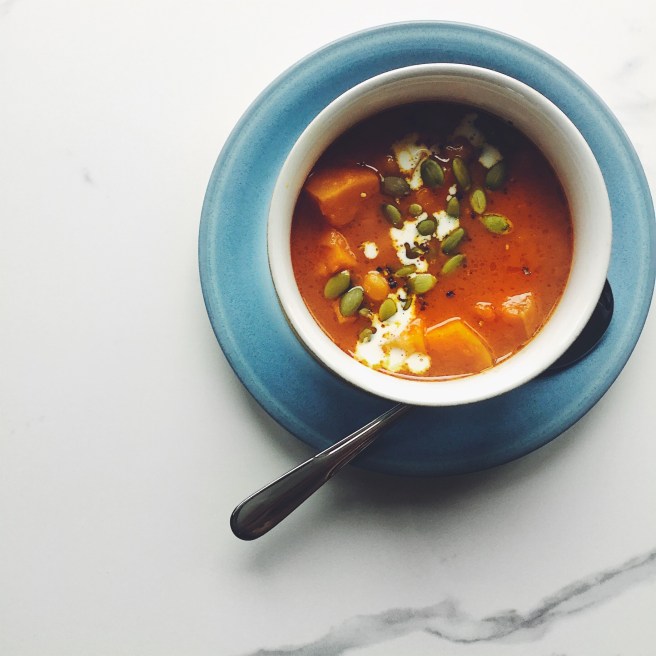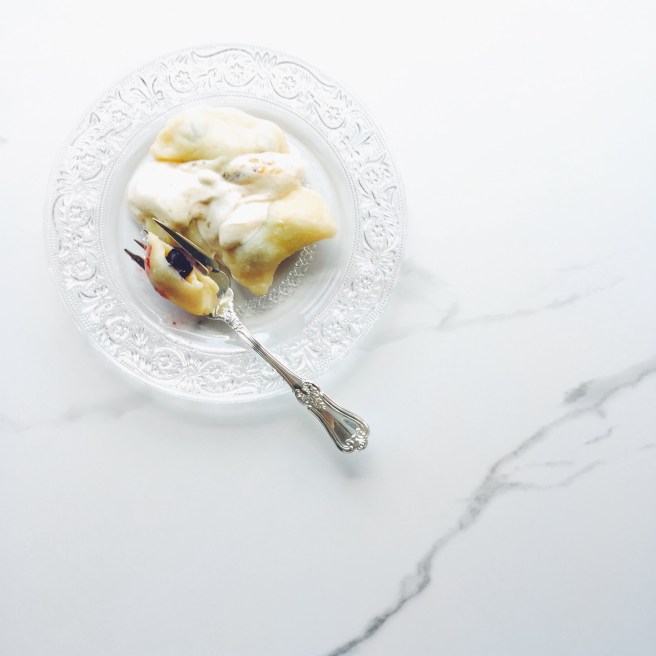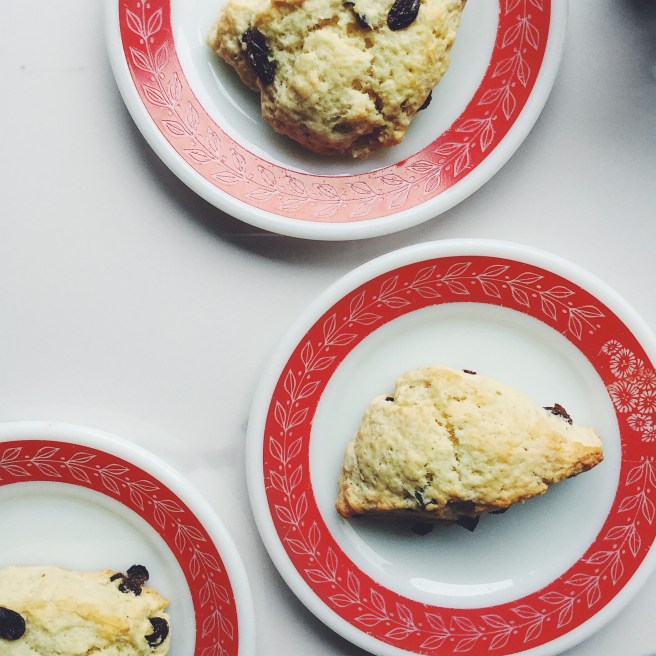
While I might live in the gorgeous Canadian coastal city of Halifax now that wasn’t always the case. Born in Edmonton, Alberta I grew up in a household with a rich, Ukrainian cultural heritage — my dad, the son of Ukrainian immigrants, grew up on a farm just outside of Edmonton. It was on this farm where I learned all about the joys (and importance) of communal dining. My grandparent’s farmhouse door was always open and, there was usually a steady stream of people arriving to visit. Family or friend, it didn’t matter. What mattered was that we would all squish around the kitchen table waiting for the dishes my grandmother would prepare and serve. Maybe this is why I’m drawn to the East Coast — a place where deep importance is placed on the “kitchen party” — an activity I could recognize from my own upbringing on the Canadian prairie. This is where I find a kinship with Karlynn Johnston, author of The Kitchen Magpie blog and two cookbooks.
Her latest cookbook, The Prairie Table, focuses on this idea of communal dining building and sustaining strong connections between people. The Prairie Table is all about the kind of warm and generous hospitality I grew up with. It’s talking about both everything and nothing with friends and strangers alike — after all in the warmth of my memories, strangers were just friends I hadn’t met yet! The crucial element is having lots of food and drink — I agree wholeheartedly with Johnston’s comment: “We just have this crazy need to feed people” (4) when she’s talking about how her family entertains. It’s how my family entertained too! I appreciate how Johnston harkens back to the time when “socials” were the thing that brought everyone together and how she makes this both current and relevant for today’s busy modern life.

The Prairie Table is organized into eight chapters: Ukrainian Dishes, Breads, Buns, + Baked Goods, Small Bites + Nibbles, Salads + Vegetable Sides, Main Dishes, Dainties + Cookies, Portable Desserts, and Libations. Just like her love of vintage glass and kitchenware her recipes have a decidedly retro feel. And, at the very end of her book she helpfully added a Glassware Index for curious, vintage-obsessed people (like me) who want to know the names and producers of the different types of vintage glassware that graces her beautiful photos. The recipes come from Johnston’s own kitchen — so there are no special-dietary considerations. For my vegetarian family, I found more than enough crowd-pleasing recipes to satisfy my people.

Recipes like her slow cooker Red Curry Pumpkin, Chickpea, and Sweet Potato Soup is a great vegetarian meal to serve on a weeknight or to a crowd at a dinner party or potluck (if you sub the butter this would also work as a vegan meal too). I served this warming, comforting dish with big slices of sourdough. Other meal recipes such as the Gnocchi Pesto Caprese Salad (with the cutest mini mini bocconcini) is great to bring as a potluck offering or just enjoy as a hearty lunch. This dish is also a great example of the recipes Johnston refers to as “cheaters” because you can rely on store-bought ingredients (the pesto and gnocchi here) as time savers without sacrificing any flavour! She knows all about how busy family life can get, so it’s great that she’s mindful of making a home cook’s time in the kitchen count!

For me, the standout recipes in the book come from her Ukrainian Dishes chapter. Drawing from her own Ukrainian roots and family recipes, she’s filled a chapter with what I consider to be the greatest hits food-wise when you’re thinking about dishes common to Ukrainian Canadians: Pierogies, Nalysnyky (filled crepes), Cabbage Rolls, Perishke (filled buns), Egg Noodle Casserole, Borscht, and Nachynka (cornmeal casserole), just to name a few. Even if you’re not of Ukrainian heritage, her chapter offers a useful and delicious way to learn how to cook these amazing dishes.

As for myself, with the first couple recipes I tried from this chapter — Perishke (Filled Buns) and the Ukrainian Onion, Cream, and Dill Sauce — I was immediately transported to my grandmother’s kitchen. In all honesty, the first bite of my own, homemade Perishke had me bawling (homesickness can hit at any time!) and it also had me in a state of wonderous disbelief — with one part of my brain screaming “THESE TASTE EXACTLY LIKE PERISHKE!” with the other part saying “well, what did you think they would taste like??” I had never made Perishke before because my grandmother always does but, now, living on the other side of the country, Johnston has given me a little bit of home to enjoy. It’s also given me a tangible way to share these traditional recipes with my daughter because, unlike me, she won’t be spending all her free time at “The Farm.” In my opinion, it would be wrong to serve Perishke without that signature Onion, Cream, and Dill Sauce but this sauce is great because it’s so versatile. My grandmother would often serve it with (what us kids called) “banana potatoes” (my grandfather grew the most incredible variety of creamy, yellow-fleshed fingerlings). The kitchen garden on the farm always had an abundance of white onions and fresh dill, which are the backbone of this sauce. When you try making this recipe just use the fresh dill, otherwise the taste just won’t be the same.

I think one of the most iconic Ukrainian recipes that almost everyone knows about is the Pierogi (also referred to as Varenyky). Here, Johnston has given two family pierogi/perogy recipes. One weekend afternoon my daughter and I gave Grandma Kay’s Polish Pierogi Dough a try. Velvety in texture and a jiffy to roll and re-roll out, we spent the afternoon making our own blueberry-filled pierogies. Completely delicious, I kept with my own family tradition and served them with a generous dollop of sour cream mixed with brown sugar. I love how Johnston really gives such great perogy making tips and advice. If you’ve always wanted to give making these a try her recipes would be a great place to start.
To say that cooking from Johnston’s The Prairie Table makes me homesick is probably one of the very best compliments I can pay her. Reminding me how recipes like the ones in her book would grace the tables of family potlucks, barbecues, and gatherings brings such a warmth into my heart, as does her poignant and humorous way of writing. Even if you’re not from the Prairie, let Johnston’s devotion to encouraging families to congregate around the table inspire you. If you’re curious to see what else I’ve tried, then visit my custom Instagram hashtag #theeatworthyprairietable or my dedicated Facebook post. As I cook more recipes, I’ll keep adding to these.

I would like to take this opportunity to thank Appetite by Random House for providing me with a free, review copy of this book. I did not receive monetary compensation for my post, and all thoughts and opinions expressed are my own.

2 thoughts on “Book Club Tuesday: The Prairie Table”